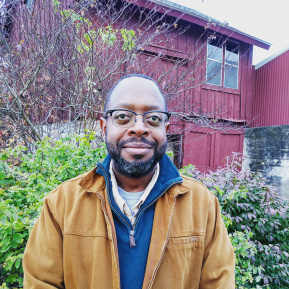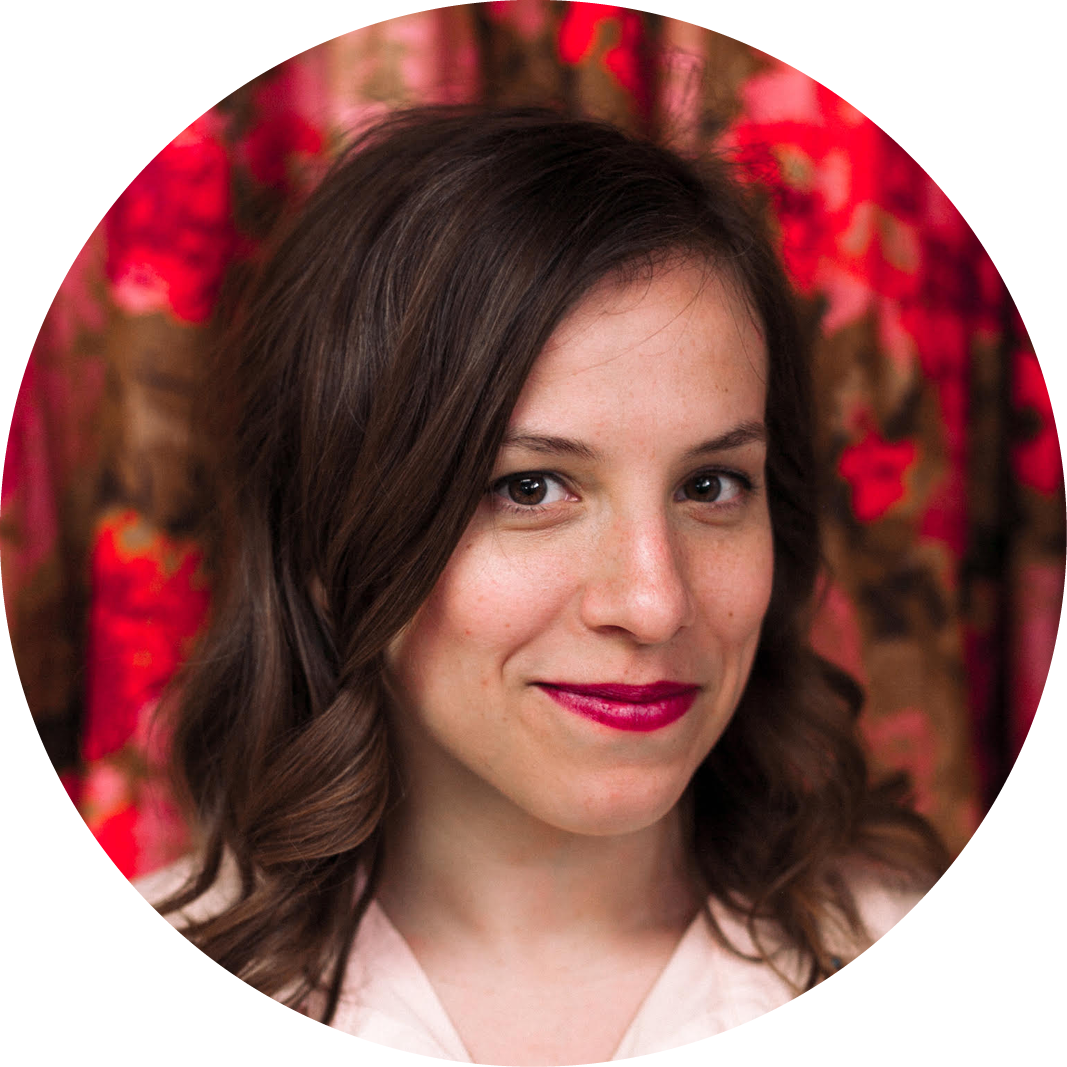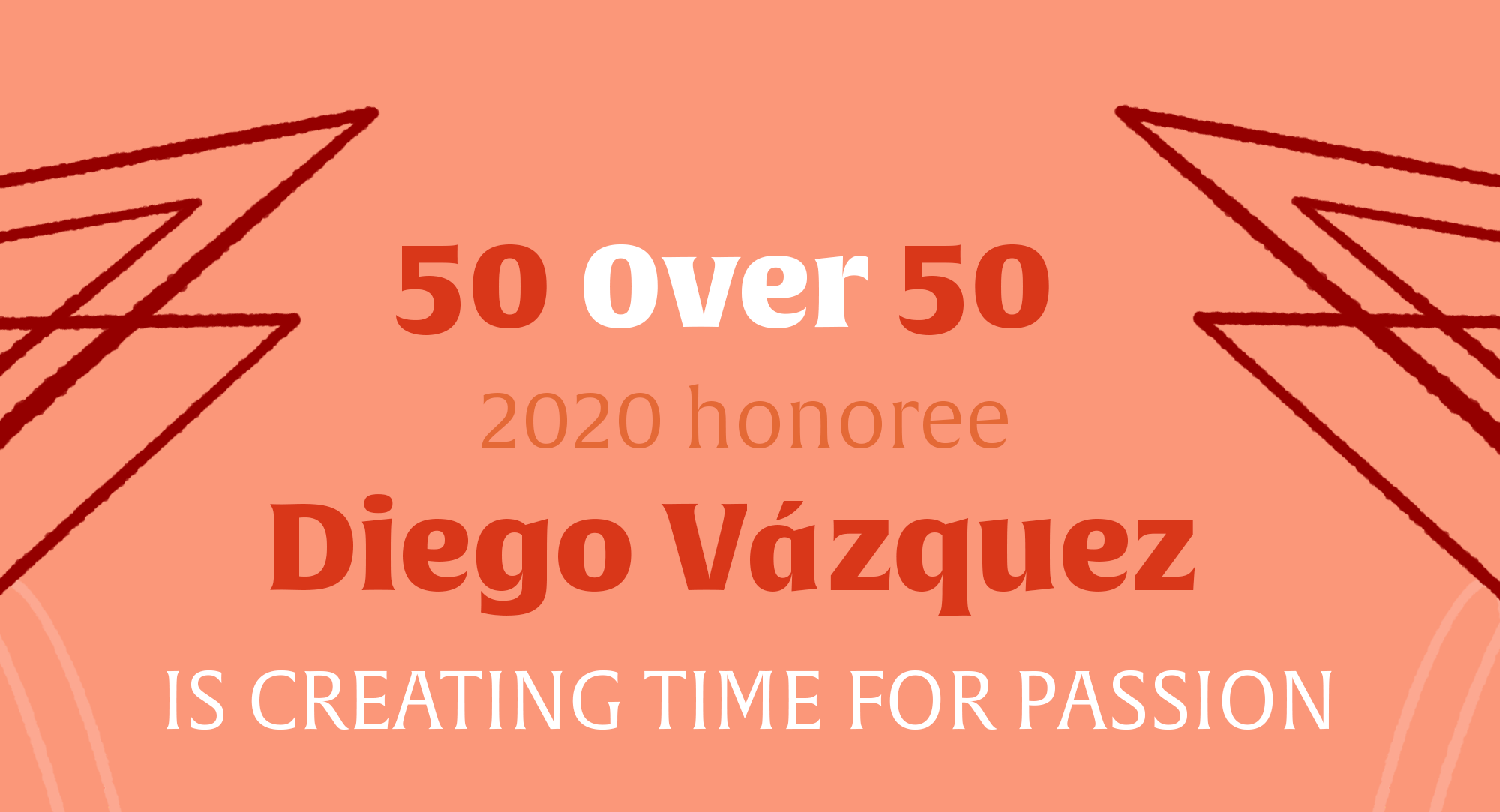
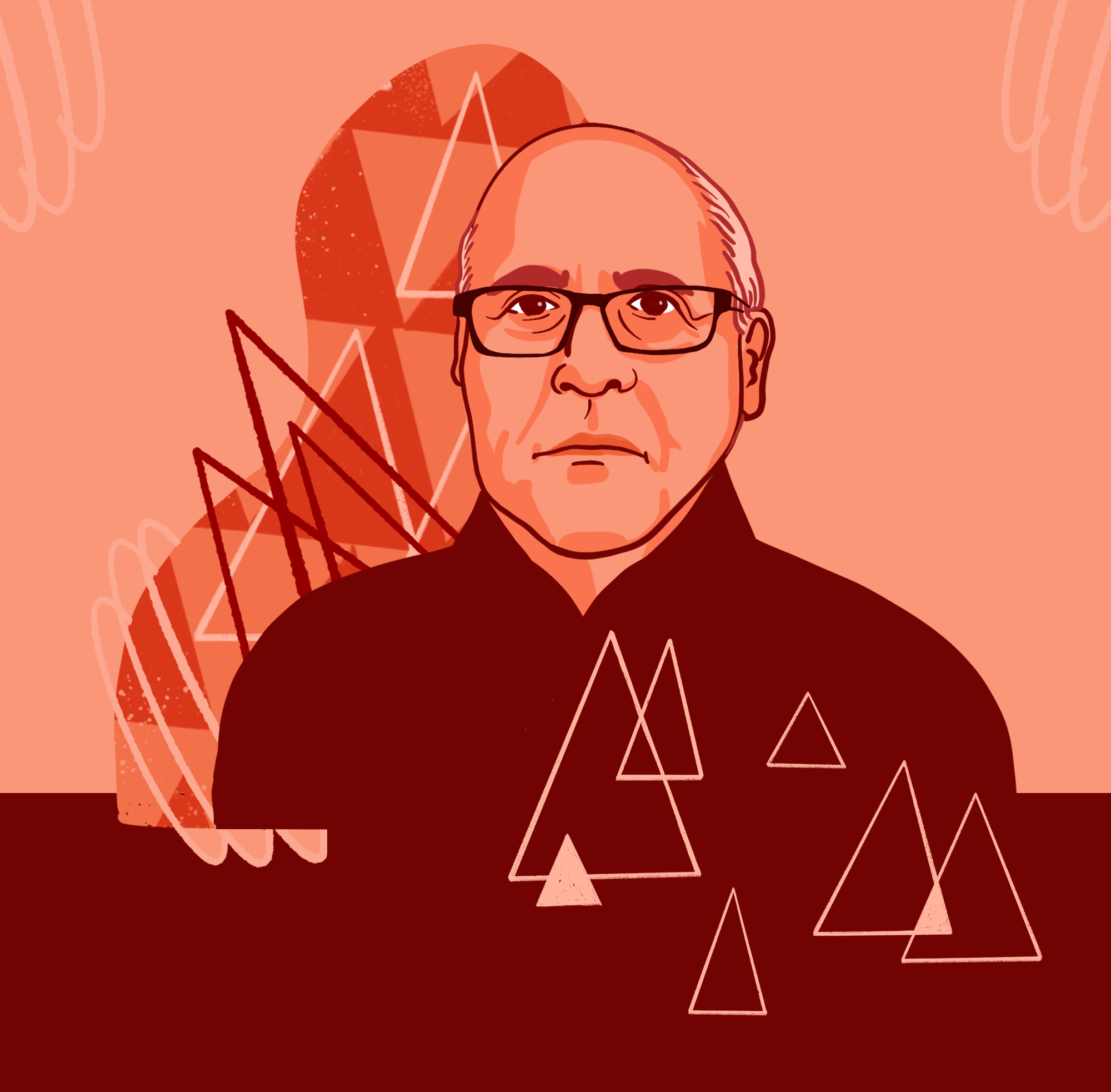
Story by Michael Kleber-Diggs | Art by Julie Van Grol
Diego Vázquez Jr. lights up when he talks about his passions. In general, his energy is casual and contagious, and it elevates when he talks about things he loves.
One of his passions is trains. Diego enjoys traveling by train for the act itself, but trains also connect Diego to two other passions. “One thing I’ve been doing a lot of is travel photography,” he says. “My photography is buildings, nature.”
As an artist, Diego was first known for spoken word performances and for the community he built for spoken word. He was a foundational figure in the slam poetry scene, starting a popular performance series at Kieran’s Pub in the early 1990s. Diego is also a published writer, a visual artist, and, especially lately, a photographer. “I’m doing a lot more photography,” he says.
Travel also allows Diego to see his children and grandchildren, his truest passions. He has family on both coasts and likes to travel by train in style, renting a room he can sleep and shower in, taking photos and videos along the way.
Diego is 71, and he is beginning to think about ways to create more time for himself and his passions.
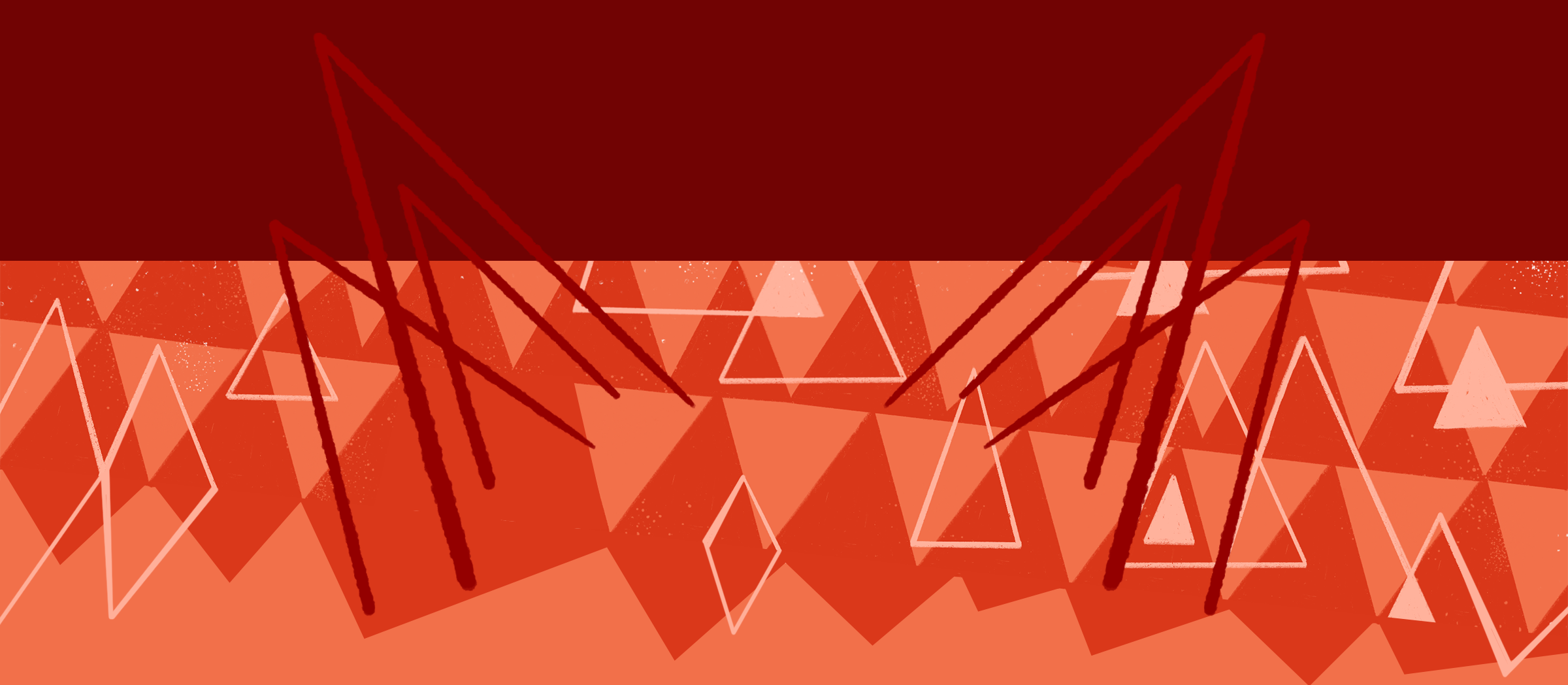
“I haven’t done a retreat for a long long time,” he says, “and at this stage of my career I’m planning on doing that after the first of the year. I’m going to at least start with a month somewhere.” Time for himself and additional time with family comes after years of supporting others – promoting spoken word poets, hosting a writing group at his house every other week, and teaching in a Women’s Writing Program he helped create that provides instruction in creative writing to women in County correctional facilities.
Diego helped start the Women’s Writing Program nearly a decade ago, he says. He’s not big on curriculum-vitae level specifics. “I went to an initial meeting, and I gave my ideas. I said, ‘I don’t want to be involved with a program that’s not going to involve publication.’ I think that’s critical.”
So, since its inception, every class in the Women’s Writing Program, which is offered in Ramsey, Sherburne, and Washington County correctional facilities, has culminated in publication. “I can’t tell you how many times women have gotten that book in their hands, and you just see the look on their faces. It’s just remarkable to see the gratitude, so much gratitude. You can’t beat publications, especially if you’re a writer,” he says.
As we met at a small eggroll restaurant in Saint Paul to talk about his work, Diego was preparing to return to a Women’s Writing Program classroom for the first time since March 13, 2020. He marks the specific date in a way that conveys its significance to him.
Each class runs for ten consecutive days, and Diego has the writers get started writing right away. “They want to be there, and they want to get something out of whatever personal writing journey they’ve been on.”
“When we’re doing a session, we always go from rough drafts. We get into some type of writing exercise, and we get that rough draft spoken aloud. We get them reading to everybody immediately, you know, start from the first day. If you’re gonna write, you have to get it out there, right?”
The classes aren’t genre specific, but Diego says “almost everything develops in the poetry.”
Diego speaks with humility about his work. “Most of them,” he says, speaking of his students, “they’re looking to advance whatever type of writing they’re doing. I don’t approach it as trying to teach. I’m mostly trying to offer them suggestions and help pinpoint a direction and try to strengthen their work – more like an editor. You have to be able to guide people into a creative process,” he says.
“I have never found it difficult,” he adds. I’ve heard for some people [teaching] becomes an enormous challenge. For me it’s not a challenge to guide people into a creative process. Go in there the same way you guide yourself.”
“If you weren’t wise, if you didn’t have some kind of wisdom earlier on, you’re not going to get it simply by aging.”

When asked why he felt drawn to teaching in correctional facilities, Diego says “the interaction. I like what I get from the interaction, which is hard to describe. I just feel tremendous. You feel like you’re doing something worthwhile with other people that are accomplishing something worthwhile. It just feels good.”
During the nineteen months when Diego was not able to teach, he traveled when the pandemic allowed travel. He worked on a couple of fiction projects too. “I wrote,” he says, and his energy increases noticeably. “I wrote weird things.”
“And maybe it’s because I’m such a chicken,” he adds, “but I wrote very little about the pandemic. It’s hard for me to write about. I don’t write much that’s current. I’m so used to writing fiction. I need time and distance for fiction. You know, I couldn’t find much to fictionalize about the pandemic. So I don’t have I don’t have pandemic pieces.”
When asked about being an artist with years of experience, my attempt to avoid saying ‘an older artist’, Diego goes right at it. He tilts toward the philosophical and speaks with conviction. He says, “If you weren’t wise, if you didn’t have some kind of wisdom earlier on, you’re not going to get it simply by aging.”
“Anytime I’ve had the chance to do it, I jump on it. Right now, the most important thing I do is visit family. Now it is that time in my life.”
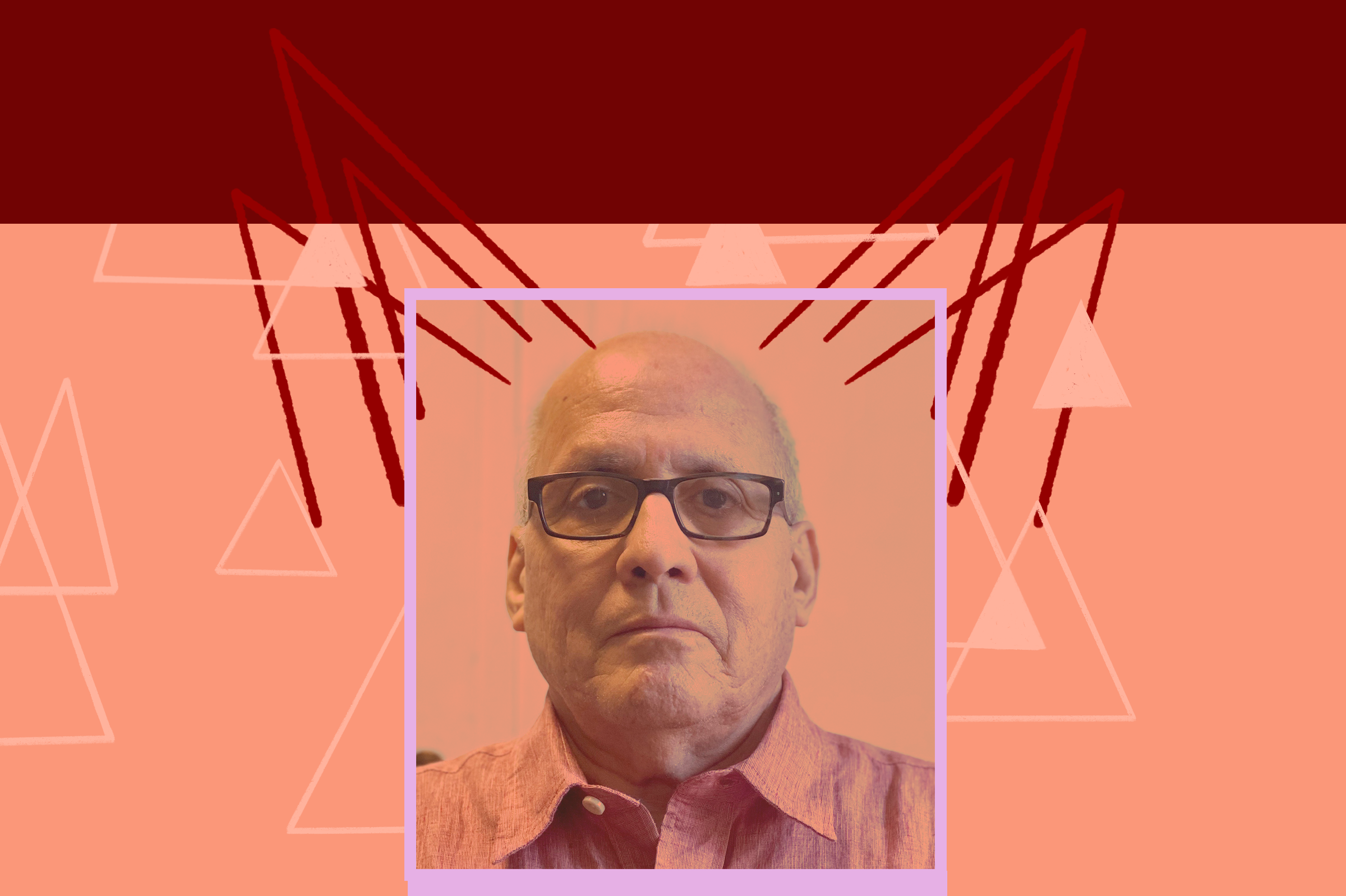
“I’m grateful to be beyond the hill – especially with grandchildren. There’s such an intense love that I never knew existed. You just can’t imagine life without them.”
Beginning next year, Diego plans to revise a couple of novels he’s been working on, take some photos, and have more time for himself and things he enjoys. He’ll continue to visit his children and grandchildren, east and west. He’ll travel by train in style. “I’ve always made time to travel. Throughout that’s always been a part of my life.”
“Anytime I’ve had the chance to do it, I jump on it. Right now, the most important thing I do is visit family. Now it is that time in my life.”

contributors
